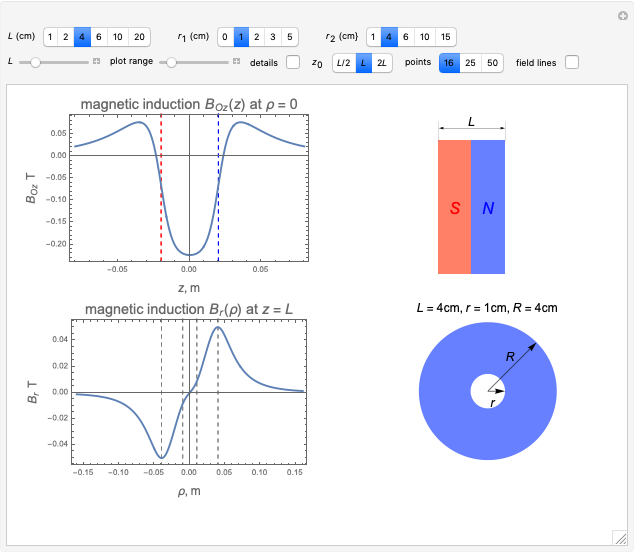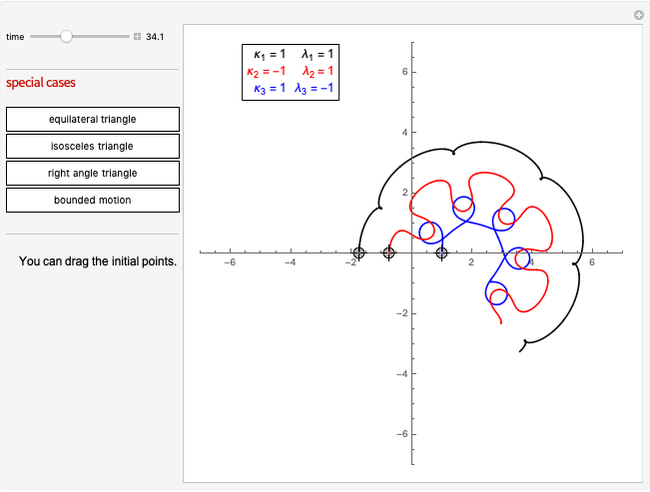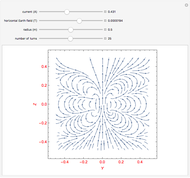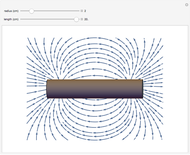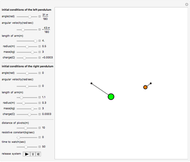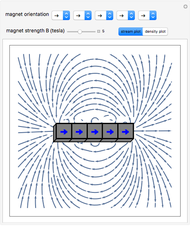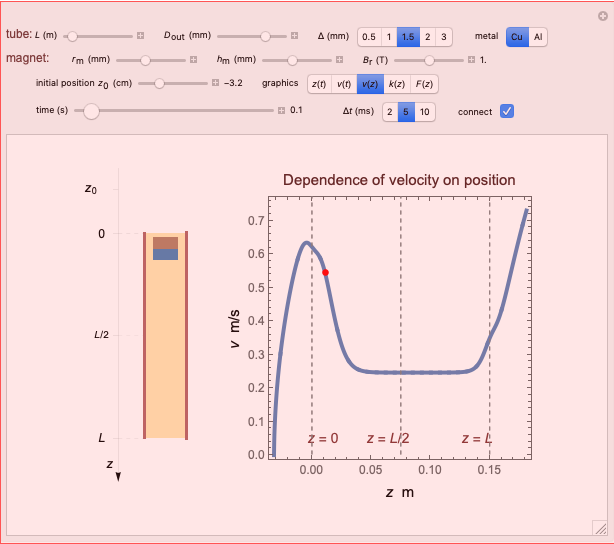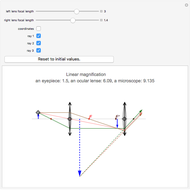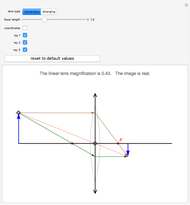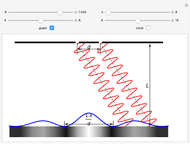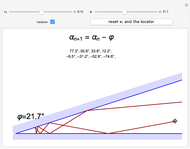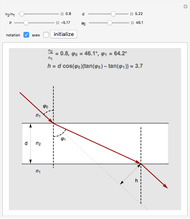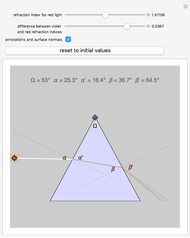Falling Cylindrical Magnet in Conducting Tube

Requires a Wolfram Notebook System
Interact on desktop, mobile and cloud with the free Wolfram Player or other Wolfram Language products.
This Demonstration shows a cylindrical magnet falling inside a conducting pipe. This fall is damped by the opposing force due to eddy currents generated in the conducting pipe.
Contributed by: Volodymyr Holovatsky and Yana Holovatska
(Chernivtsi National University and Chernivtsi Lyceum #1, Ukraine) (February 2021)
Open content licensed under CC BY-NC-SA
Snapshots
Details
Two models are used for the calculations: the point-dipole model of a magnet [1–3] (model 1) and the exact cylindrical magnet model [4, 5] (model 2).
The cylindrical magnet model contains a double integral; therefore, calculation is very slow.
The results of both models coincide when  and
and  both equal 1.6.
both equal 1.6.
System parameters:
 = pipe length,
= pipe length,
 = outer diameter of the pipe,
= outer diameter of the pipe,
 = thickness of the pipe wall,
= thickness of the pipe wall,
 = radius of the magnet,
= radius of the magnet,
 = height of the magnet,
= height of the magnet,
 = volume of the magnet,
= volume of the magnet,
 = remnant field.
= remnant field.
Also:
 ,
,
 ,
,
 , terminal velocity,
, terminal velocity,
 , drag coefficient for infinite pipe (point-dipole models),
, drag coefficient for infinite pipe (point-dipole models),
 ,
,  , inner and outer radius of pipe,
, inner and outer radius of pipe,
 volume of magnet,
volume of magnet,
 = conductivity of metallic pipe,
= conductivity of metallic pipe,
 , drag force.
, drag force.
 , drag force for finite pipe (point-dipole model).
, drag force for finite pipe (point-dipole model).
 , drag coefficient for infinite pipe (point-dipole model).
, drag coefficient for infinite pipe (point-dipole model).
The velocity  was found as the solution of the equation of motion by an iterative method:
was found as the solution of the equation of motion by an iterative method:
 .
.
References
[1] B. A. Knyazev, I. A. Kotelnikov, A. A. Tyutin and V. S. Cherkassky, "Braking of a Magnetic Dipole Moving with an Arbitrary Velocity through a Conducting Pipe," Physics-Uspekhi, 49(9), 2006 pp. 937–946. doi:10.1070/PU2006v049n09ABEH005881.
[2] A. K. Thottoli, M. Fayis, T. C. Mohamed, T. Amjad, P. T. Shameem and M. Mishab, "Study of Magnet Fall through Conducting Pipes Using a Data Logger," SN Applied Sciences, 1(9), 2019 1050. doi:10.1007/s42452-019-1086-z.
[3] C. S. MacLatchy, P. Backman and L. Bogan, "A Quantitative Magnetic Braking Experiment," American Journal of Physics, 61(12), 1993 pp. 1096–1101. doi:10.1119/1.17356.
[4] N. Derby and S. Olbert, "Cylindrical Magnets and Ideal Solenoids," American Journal of Physics, 78(3), 2010 pp. 229–235. doi:10.1119/1.3256157.
[5] Q. L. Peng, S. M. McMurry and J. M. D. Coey, "Axial Magnetic Field Produced by Axially and Radially Magnetized Permanent Rings," Journal of Magnetism and Magnetic Materials, 268(1–2), 2004 pp. 165–169. doi:10.1016/S0304-8853(03)00494-3.
Permanent Citation






